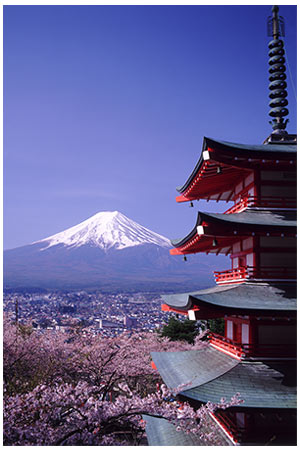One of the most powerful symbols of Japan is, of course, Mt. Fuji, the beautiful volcano that sits astride Shizuoka and Yamanashi prefectures and is visible from Kamakura, Yokohama and (when the weather permits), Tokyo. Known as 富士山 Fuji-san in Japanese (remember, never call it “Fuji-yama,” an error foreigners commonly make that has become an embarrassing cliche by now), the mountain has been a part of Japan’s culture for millenia. Now Mt. Fuji is finally going to be listed as a UNESCO World Heritage Site, joining such iconic locations as the Kinkaku-ji temple in Kyoto, the historic village of Shirakawa-go (the setting of When the Higurashi Cry), the A-Bomb Dome and Peace Memorial in Hiroshima, and Yakushima Island, whose lush vegetation served as the setting for Princess Mononoke. Japan had been pushing for its most famous mountain to gain World Heritage status for more than a decade, but had been thwarted by a shameful reality: trash. Though beautiful from afar, Mt. Fuji had been allowed to become an unsightly trash dump, used both by locals looking to discard an unwanted refrigerator as well as climbers who saw no problem with discarding their cup ramen containers when they were done with them. Well, Japanese climbers, I should say — when I visited the mountain, all the foreigners were extremely careful to make sure we brought back down any trash we’d created. Over the past few years a massive cleanup effort by the local government has been carried out, coupled with much reflection by Japanese, and this has paved the way for Mt. Fuji to gain official UNESCO recognition at last.

Mt. Fuji is finally getting UNESCO registration.















